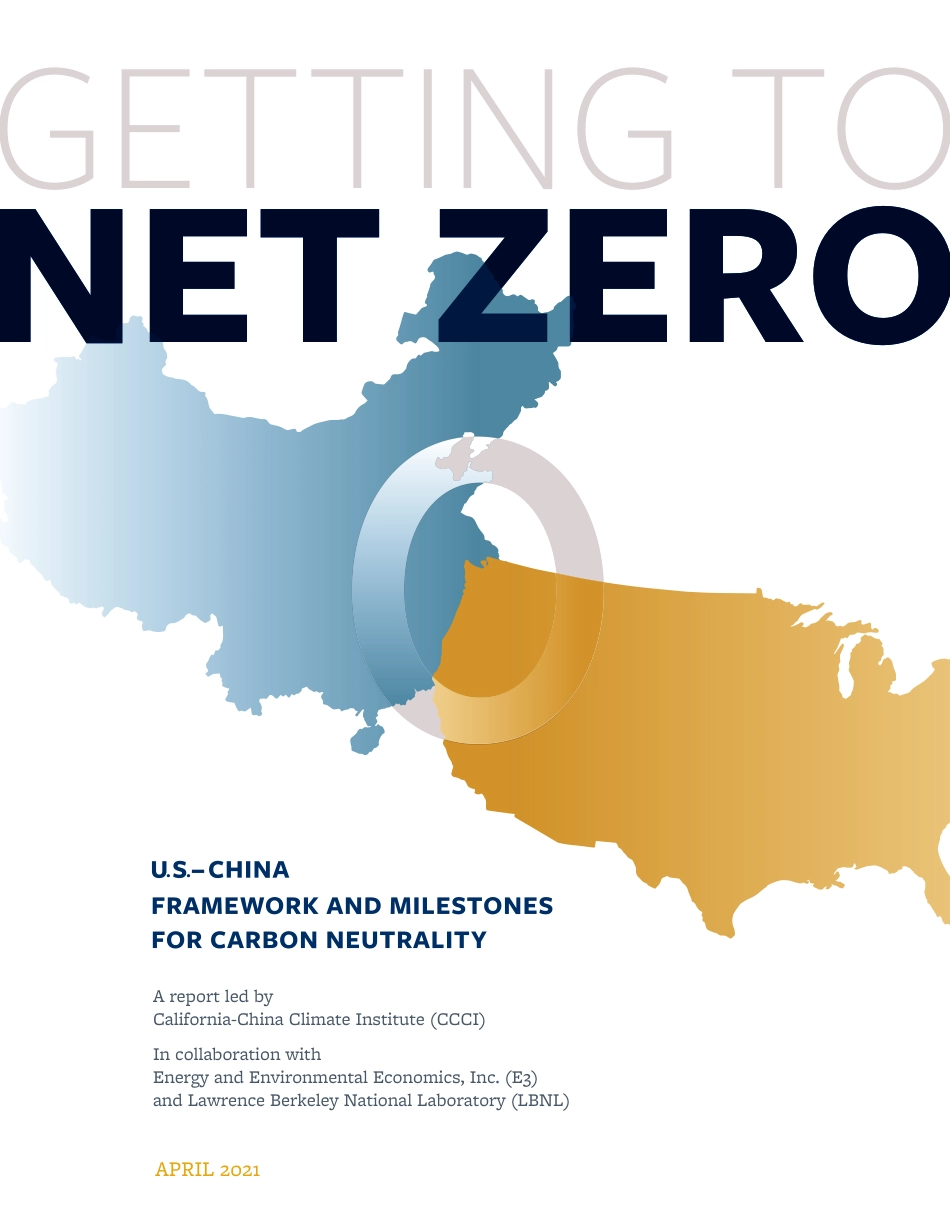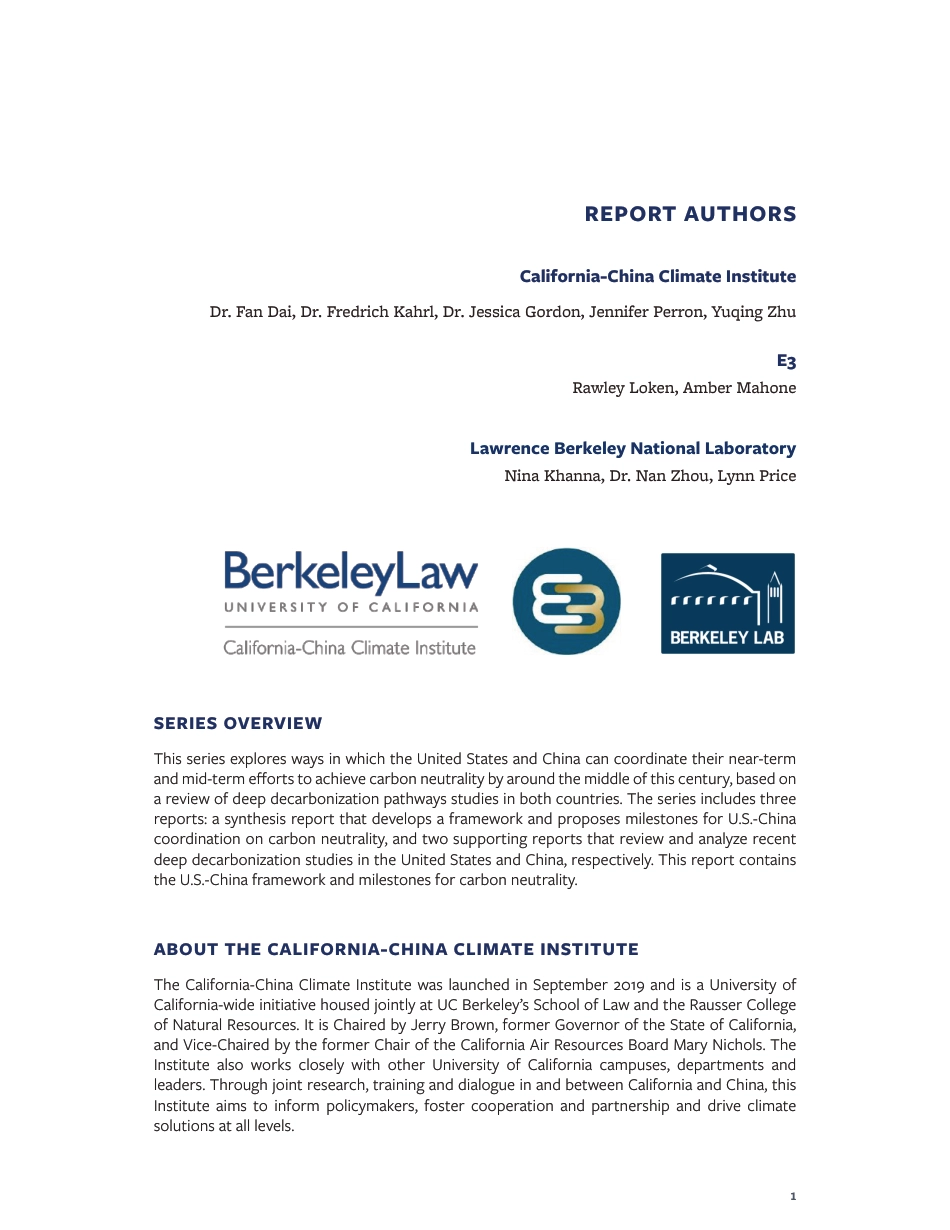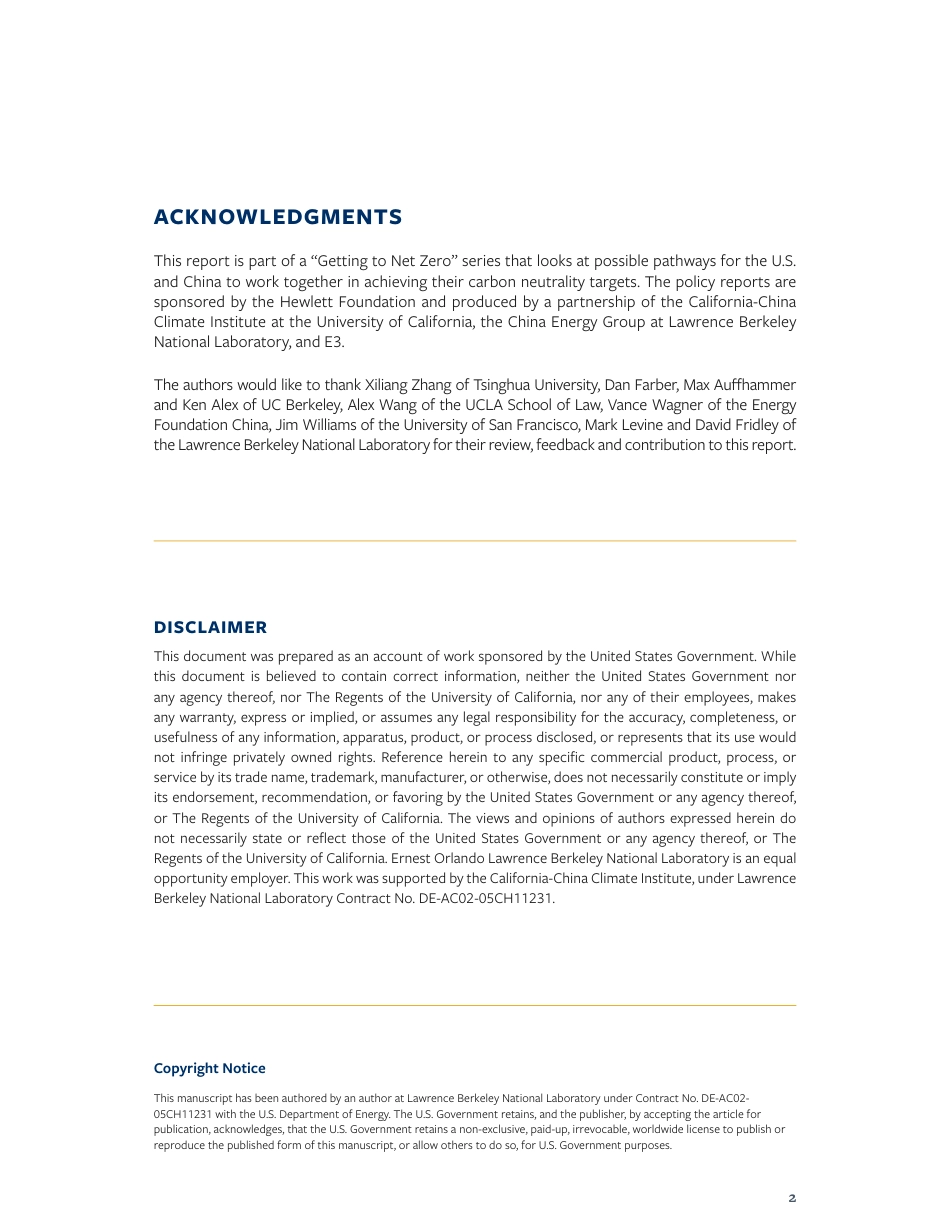GETTING TONET ZEROA report led by California-China Climate Institute (CCCI)In collaboration with Energy and Environmental Economics, Inc. (E3)and Lawrence Berkeley National Laboratory (LBNL)APRIL 2021NET ZEROREPORT AUTHORSCalifornia-China Climate Institute Dr. Fan Dai, Dr. Fredrich Kahrl, Dr. Jessica Gordon, Jennifer Perron, Yuqing ZhuE3Rawley Loken, Amber MahoneLawrence Berkeley National LaboratoryNina Khanna, Dr. Nan Zhou, Lynn PriceSERIES OVERVIEW This series explores ways in which the United States and China can coordinate their near-term and mid-term efforts to achieve carbon neutrality by around the middle of this century, based on a review of deep decarbonization pathways studies in both countries. The series includes three reports: a synthesis report that develops a framework and proposes milestones for U.S.-China coordination on carbon neutrality, and two supporting reports that review and analyze recent deep decarbonization studies in the United States and China, respectively. This report contains the U.S.-China framework and milestones for carbon neutrality.ABOUT THE CALIFORNIA-CHINA CLIMATE INSTITUTEThe California-China Climate Institute was launched in September 2019 and is a University of California-wide initiative housed jointly at UC Berkeley’s School of Law and the Rausser College of Natural Resources. It is Chaired by Jerry Brown, former Governor of the State of California, and Vice-Chaired by the former Chair of the California Air Resources Board Mary Nichols. The Institute also works closely with other University of California campuses, departments and leaders. Through joint research, training and dialogue in and between California and China, this Institute aims to inform policymakers, foster cooperation a...



